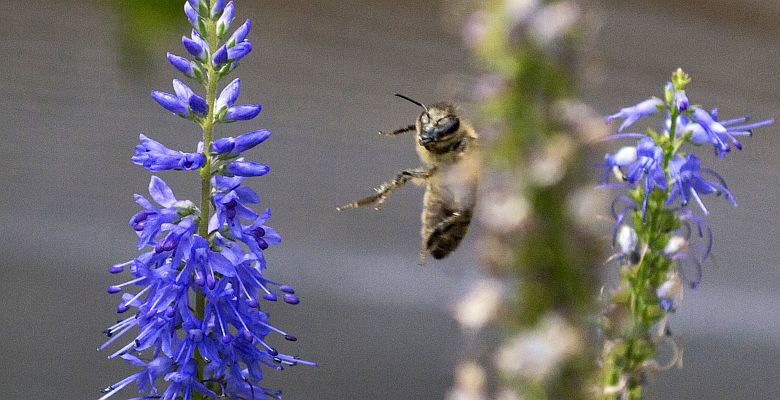An Indian-American study drew inspiration from the 'waggle dance' that honeybees use to describe the location of food.
Where are those flowers and how far away are they? This is the essence of the 'waggle dance' that honey bees perform to point out the location of nectar-rich flowers. A new study, has taken inspiration from this technique to devise a way for robots to communicate. The study was conducted by researchers at the University of Maryland at College Park (near Washington, DC) and the Indian Institute of Science in Bangalore.
According to this method, the first robot follows a shape on the ground. The orientation of the shape and the time taken to trace it tell the second robot the required direction and distance of the path to be taken. The technique may prove invaluable in situations where robot labour is required but network communication is unreliable, such as in a disaster area or in space.
Non-verbal communication
People in a noisy environment such as a factory hall are adept at communicating with gestures. But honeybees take non-verbal communication to a higher level. By wiggling their backsides as they parade through the hive, they let other honeybees know where to find food. The direction of this 'waggle dance' lets other bees know the direction of the food in relation to the hive and the sun. The duration of the dance lets them know how far away it is. It is a simple but effective way of communicating complex geographical coordinates.
This ingenious way of communicating inspired researchers to apply it to the world of robotics. Robotic cooperation allows multiple robots to coordinate and complete complex tasks. Usually they communicate via digital networks, but what if these are unreliable, for example in an emergency or in remote locations? And how can humans communicate with robots in such a scenario?
Robot Dancing
To address this, the researchers designed a visual communication system for robots with built-in cameras. Using algorithms, the robots can interpret what they see. The scientists tested the system using a simple task of moving a package in a warehouse. The system allows a human to communicate with a 'shopping robot', which supervises and gives instructions to a 'handling robot' carrying out the task.
In this situation, the human can communicate through gestures with the shopping robot, for example a raised hand with a closed fist. The robot can recognise the gesture using its built-in camera and skeletal tracking algorithms. Once the human has shown the handling robot where the parcel is, he passes this information on to the handling robot.
This means that he positions himself in front of the handling robot and follows a specific shape on the ground. The orientation of the shape indicates the desired direction of travel, while the time it takes to track it indicates the distance. The researchers tested the method using a computer simulation and with real robots and human volunteers. The robots interpreted the gestures correctly 90% and 93.3% of the time respectively, highlighting the potential of the technique.
Application
The technique can be useful in places where communication network coverage is insufficient and intermittent. This may be the case in search and rescue operations by robots in disaster areas or for robots doing space walks. The method relies on robot vision with a simple camera and is therefore compatible with robots of different sizes and configurations and is scalable.
The scientific publication can be found here.
Photo: PxHere

